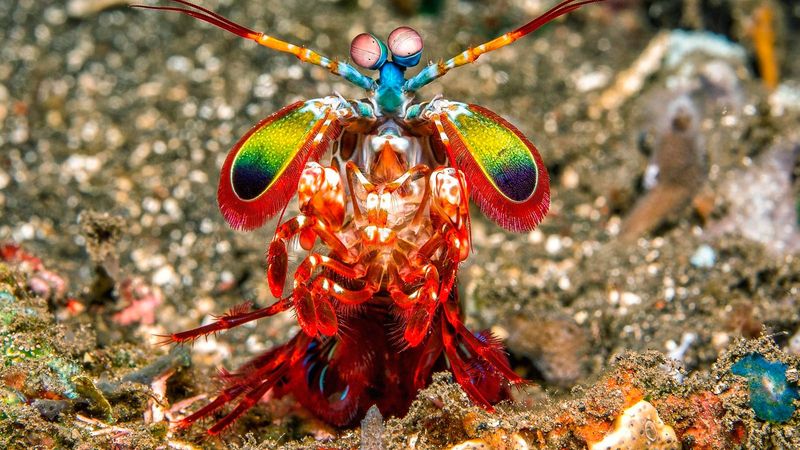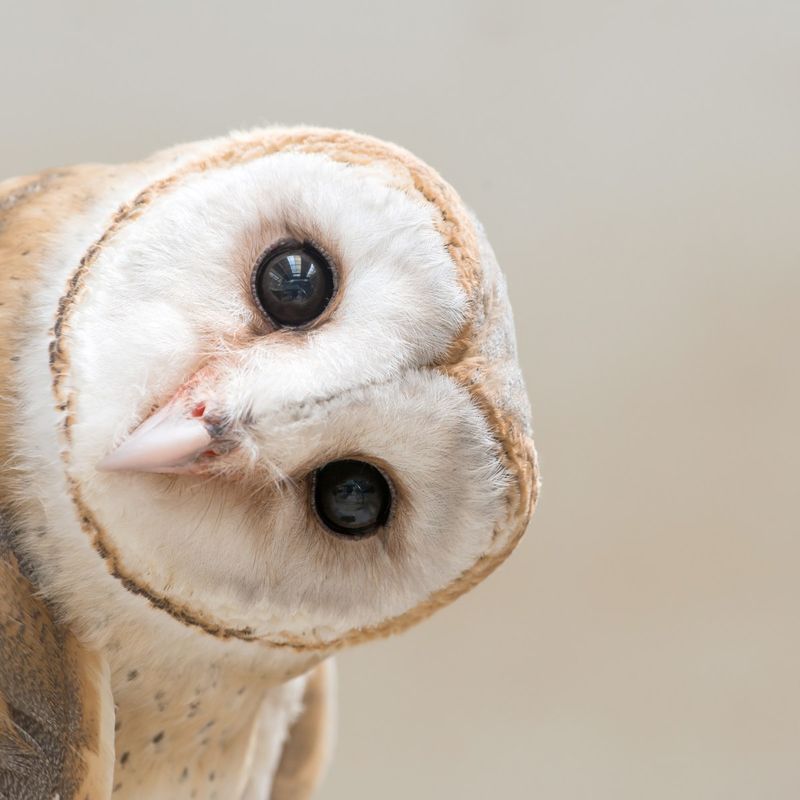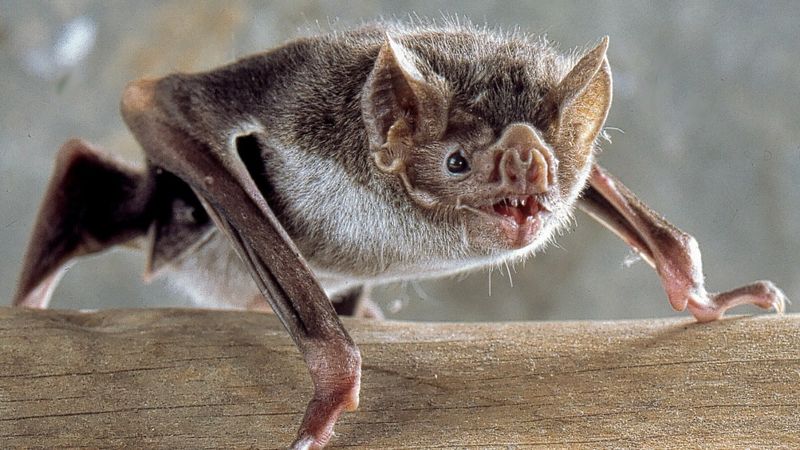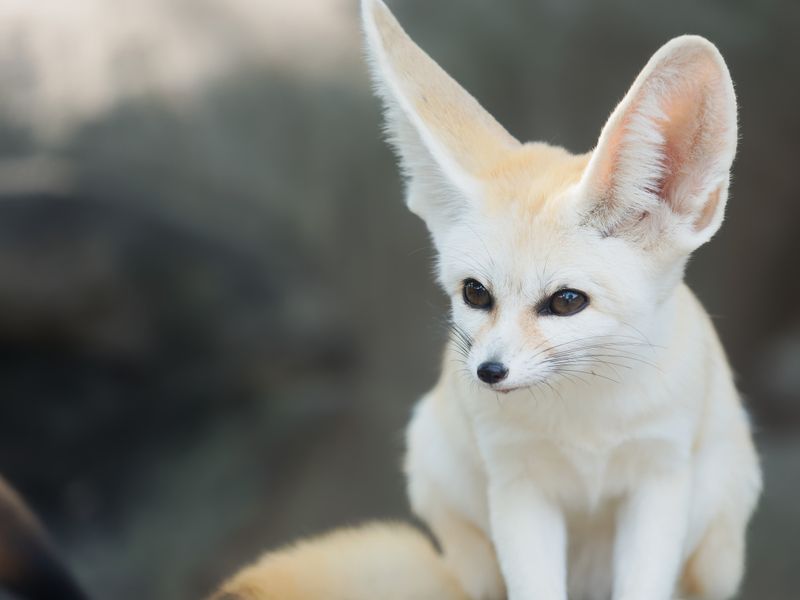12 Animals With The Most Impressive Hearing Abilities

In the vast kingdom of animals, hearing abilities vary drastically among species. While some creatures have average auditory senses, others possess extraordinary hearing capabilities that are nothing short of miraculous.
These animals use their superior auditory skills for hunting, avoiding predators, or communicating over great distances.
1. Greater Wax Moths

Eavesdropping on bat conversations without a hitch? The Greater Wax Moth has got it covered.
These tiny insects are equipped with the extraordinary ability to hear ultrasonic frequencies reaching as high as 300 kHz.
This impeccable sense allows them to detect bats’ echolocation calls, making them adept at dodging these night predators. As the bats chatter away, the moths silently navigate through the night sky, a testament to their finely-tuned hearing equipment.
No squeak can sneak past these sharp-eared insects!
2. Mantis Shrimp

Not just a flamboyant critter with a punch like a bullet, the mantis shrimp boasts an impressive auditory system.
Detecting pressure waves in the water, these underwater marvels use specialized structures in their limbs to sense vibrations. This sensitivity not only aids in hunting but also in evading predators lurking in the vibrant coral reefs.
Who knew such a tiny shrimp could pack a mighty auditory punch? Their radar-like senses make them one of the ocean’s most alert residents.
3. Barn Owls

In the realm of stealth and precision, barn owls reign supreme. Their asymmetrical ears provide them with an uncanny ability to pinpoint the exact location of even the faintest rustle of prey in complete darkness.
This auditory prowess is vital for their nocturnal hunts, turning every night into a successful foray for food. With ears tuned like a finely-crafted instrument, no tiny movement escapes their attention.
Hunting in silence, they glide effortlessly, a true marvel of auditory architecture.
4. Kangaroo Rats

Life in the vast, dry desert poses many challenges, yet kangaroo rats have adapted to thrive. These small rodents possess super-sensitive hearing that acts as a vital defense mechanism.
Able to detect the faintest vibrations, they can hear the stealthy approach of a hungry rattlesnake. Their keen ears provide an early warning system, allowing them to make a quick escape into the safety of their burrows.
In the desert, where danger lurks at every grain of sand, their ears are their greatest allies.
5. Elephants

When it comes to long-distance communication, elephants are the unchallenged champions of the animal kingdom.
With the ability to hear low-frequency rumbles, known as infrasound, these gentle giants can communicate messages across miles.
This acoustic skill is crucial for maintaining social bonds and coordinating movements across their extensive home ranges.
In the vastness of the savanna, where visual cues are limited, elephants rely on their infrasonic conversations to keep the herd united and informed.
6. Bats

In the pitch-black world of caves and night skies, bats navigate and hunt with a precision that is nothing short of spectacular.
Their secret weapon? Echolocation. By emitting high-frequency sounds reaching up to 200 kHz, bats can detect even the tiniest of insects.
This sonic superpower allows them to pursue prey and avoid obstacles in complete darkness. While we might think of them as silent, bats are actually bustling with chatter, their conversations a symphony of survival in the night.
7. Dolphins

Graceful and intelligent, dolphins traverse the murky waters with the ease of a seasoned sailor.
Their remarkable hearing range of up to 150 kHz is the cornerstone of their echolocation ability, a skill that allows them to “see” their underwater world in detail.
This auditory system helps dolphins locate food, avoid obstacles, and communicate with pod members, creating a harmonious life in the ocean’s depths.
In the underwater soundscape, dolphins are the maestros of marine acoustics.
8. Fennec Fox

Fennec FoxThe fennec fox, native to the deserts of North Africa, is not only known for its strikingly large ears but also for the incredible hearing they provide.
These ears allow the fennec fox to detect prey scurrying underground or even a predator’s soft footfalls. The fox’s auditory range is finely tuned to the high-pitched sounds often found in its arid habitat.
In addition to their functional benefits, the large ears help dissipate heat, making them an essential adaptation to the desert environment.
This dual purpose highlights nature’s ingenuity in evolving such a feature. Young fennec foxes quickly learn to rely on their hearing as they explore the vast sandy expanses.
9. Dogs

Our faithful companions, dogs, are endowed with hearing capabilities that far surpass our own.
Able to perceive frequencies up to 65 kHz, dogs are often the first to detect sounds we can’t hear, such as a distant doorbell or an approaching thunderstorm.
This acute sense of hearing is why they appear to have a sixth sense about the world around them. Whether it’s alerting us to visitors or sensing changes in the weather, dogs truly are our auditory guardians.
10. Pigeons

Masters of navigation, pigeons possess a hearing ability that aids their legendary homing skills.
These urban dwellers can detect low-frequency sounds like distant thunderstorms or volcanic eruptions, helping them stay oriented during their flights.
This sensory advantage has made pigeons invaluable messengers throughout history, guiding them back home with unerring precision.
While they might seem ordinary, pigeons are truly remarkable auditory navigators, their ears attuned to the whispers of the earth itself.
11. Beluga Whales

In the icy waters of the Arctic, beluga whales sing their way through life with an impressive auditory skillset.
Utilizing echolocation, these “sea canaries” can navigate, locate food, and communicate effectively over long distances.
This ability is crucial for survival in the often murky, ice-filled waters they call home.
By emitting a series of clicks and whistles, belugas create a detailed sonic map of their surroundings, ensuring they remain connected and informed in their frigid, aquatic world.
12. Cats

Whiskers twitching and ears alert, cats are ever the attentive listeners in the world around them.
With a hearing range extending up to 85 kHz, cats can detect high-pitched sounds like the squeaks of mice, giving them a distinct advantage as stealthy hunters.
Whether stalking through a garden or lounging indoors, their acute hearing ensures they seldom miss a rustle or squeak. This makes them not only adorable companions but also effective controllers of unwanted rodent visitors.






